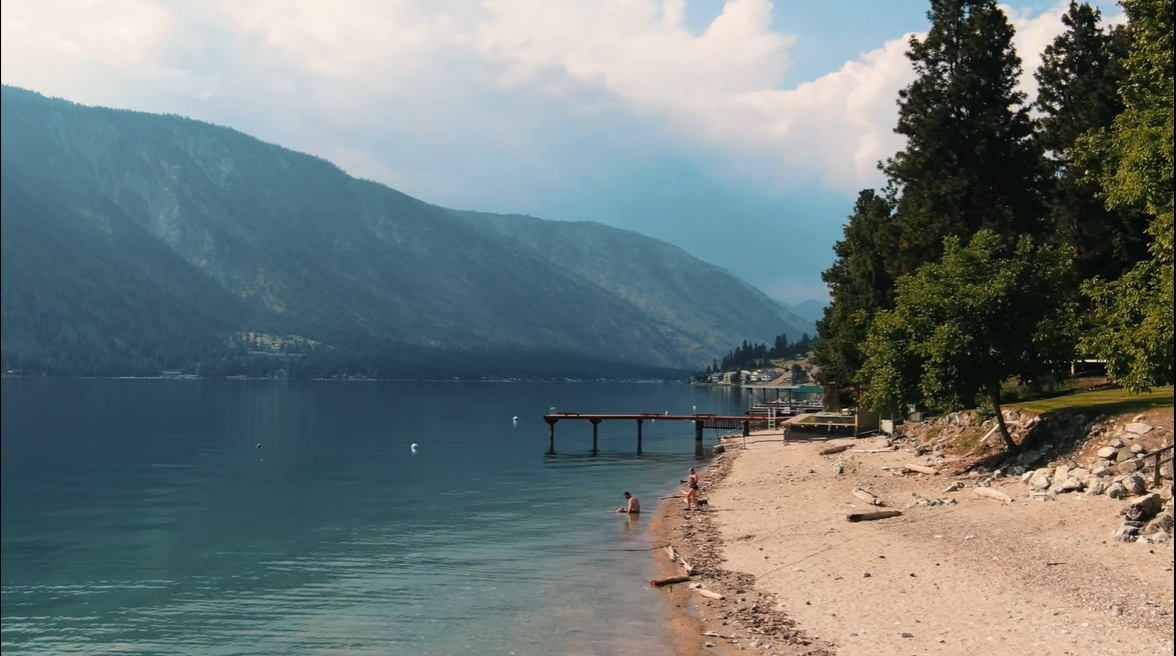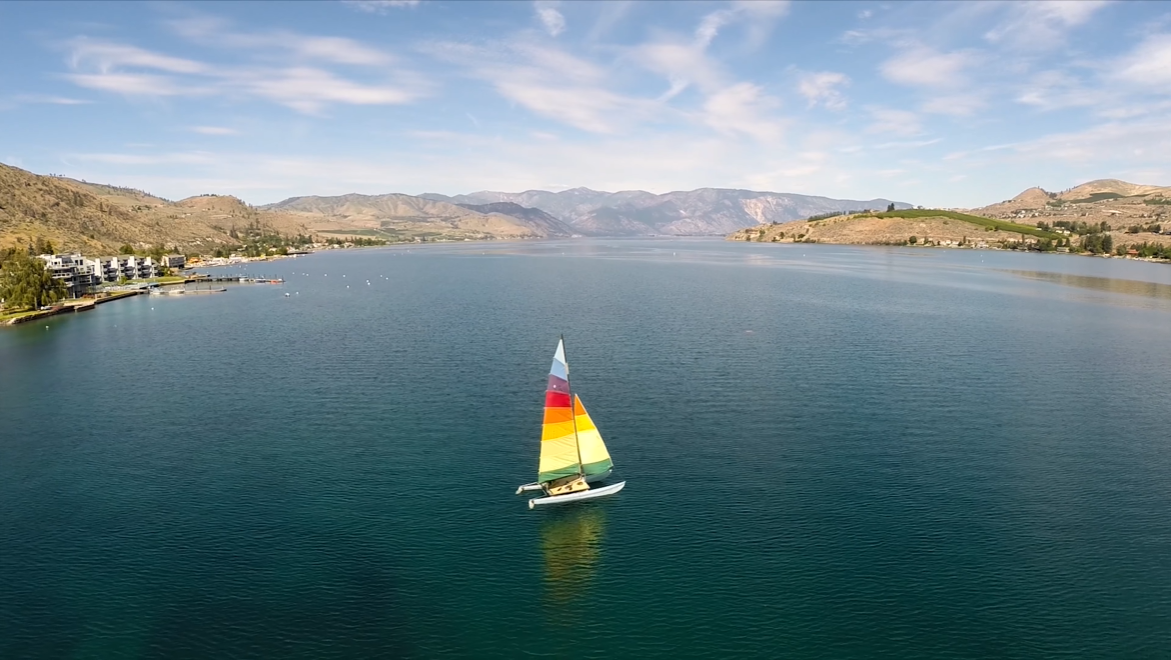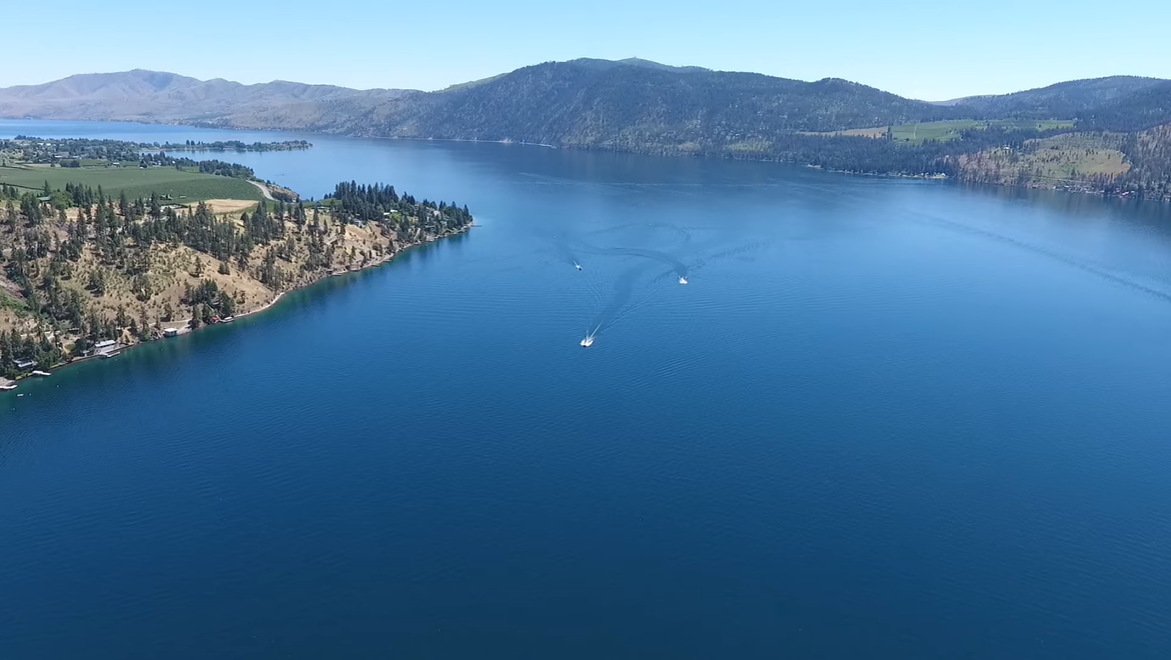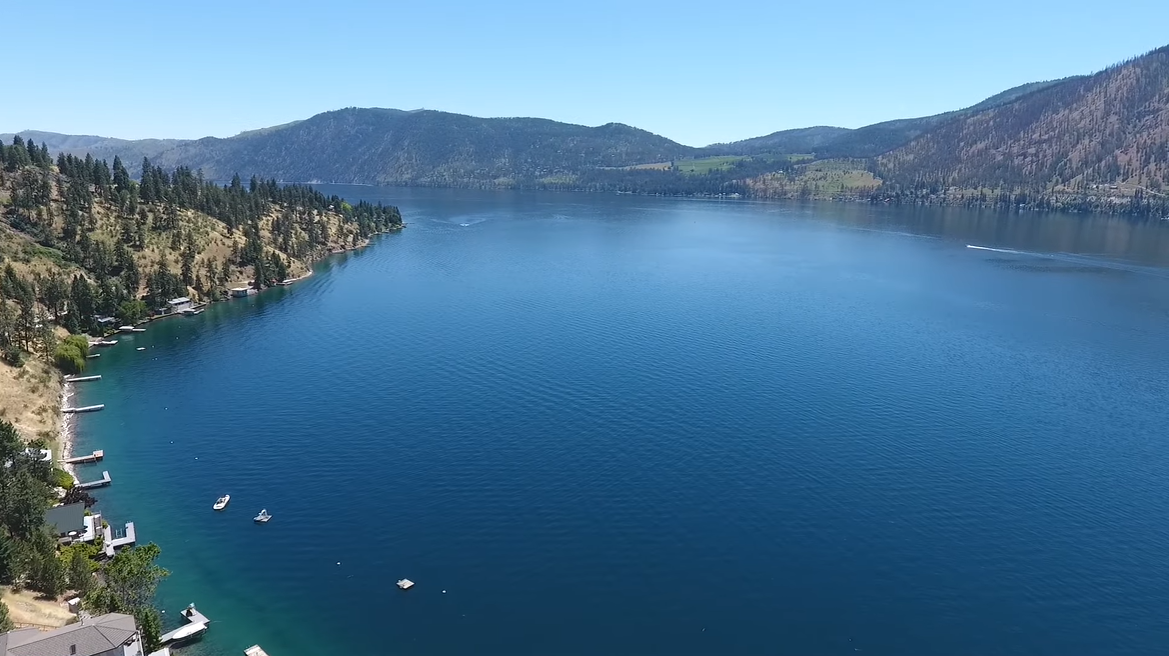Lake Chelan
Lake Chelan is a stunning, glacier-fed lake located in north-central Washington, USA. Stretching over 50 miles in length and plunging to a maximum depth of 1,486 feet, it is the third deepest lake in the United States and the 25th deepest in the world. Nestled within the Cascade Range, Lake Chelan offers breathtaking scenery, a rich history, and a variety of recreational opportunities.
.png) |
| Lake Chelan |
Geography and Geology
Lake Chelan was carved by glaciers thousands of years ago, creating its characteristic long and narrow shape. The lake lies in a deep valley with its upper portion surrounded by the rugged North Cascades, while its lower portion transitions into rolling hills and vineyards. The lake's unique depth results from its location in a fjord-like glacial trough, with steep cliffs plunging directly into the water.
The lake is divided into two distinct basins: the deeper Stehekin Basin in the northwest and the shallower Wapato Basin in the southeast. These basins are separated by a natural underwater ridge near the town of Lucerne. The Stehekin River, the primary inflow, feeds the lake from the northwest, while its outflow is controlled by a dam at the southeastern end in Chelan.
.png) |
| Lake Chelan |
Climate and Ecology
The Lake Chelan region experiences a unique climate influenced by both the Pacific Northwest's maritime weather and the drier conditions of eastern Washington. The lower basin has a semi-arid climate with hot, dry summers and mild winters, making it ideal for agriculture, particularly vineyards and orchards. The upper basin, closer to the North Cascades, experiences cooler temperatures and higher precipitation, supporting lush forests and diverse wildlife.
Lake Chelan and its surrounding ecosystem are home to a variety of plant and animal species. The lake supports native fish populations, including cutthroat trout, bull trout, and mountain whitefish, along with introduced species such as kokanee salmon and lake trout. The surrounding forests provide habitat for black bears, deer, mountain goats, and an array of bird species, including bald eagles and ospreys.
.png) |
| Lake Chelan |
Human History and Culture
The region around Lake Chelan has been inhabited for thousands of years by indigenous peoples, particularly the Chelan Tribe, a subgroup of the Confederated Tribes of the Colville Reservation. The Chelan people relied on the lake for fishing, hunting, and transportation, and their legacy remains embedded in the region's culture and place names.
European-American settlers arrived in the 19th century, drawn by the area's natural beauty and agricultural potential. The establishment of the town of Chelan in the late 1800s marked the beginning of organized settlement. Tourism quickly became a key industry, alongside farming and logging. The completion of the Chelan Dam in 1927 provided hydroelectric power and regulated the lake’s water levels, further shaping its modern landscape.
.png) |
| Lake Chelan |
Recreation and Tourism
Lake Chelan is a popular destination for outdoor enthusiasts, offering a wide range of recreational activities. Boating, fishing, and kayaking are among the most popular water-based activities, while the surrounding mountains provide excellent hiking, camping, and wildlife viewing opportunities.
The town of Chelan, located at the southeastern end of the lake, serves as the main gateway for visitors. It offers a charming mix of shops, restaurants, and wineries, with local vineyards producing some of Washington’s finest wines. The Lake Chelan Wine Valley is particularly known for its Riesling, Syrah, and Chardonnay varieties.
At the northwestern end of the lake, the remote community of Stehekin can only be accessed by boat, floatplane, or hiking. Stehekin offers a peaceful retreat with rustic lodges, scenic trails, and access to North Cascades National Park. Visitors can explore Rainbow Falls, rent bikes, or simply enjoy the serenity of this untouched wilderness.
.png) |
| Lake Chelan |
.png) |
| Lake Chelan |
.png) |
| Lake Chelan |
Conservation and Environmental Concerns
Efforts to preserve the natural beauty of Lake Chelan have been ongoing for decades. The lake is part of the Lake Chelan National Recreation Area, which is managed by the National Park Service as part of the North Cascades National Park Complex. Conservation initiatives focus on maintaining water quality, protecting wildlife habitats, and preventing the spread of invasive species.
Development and tourism, while beneficial to the local economy, pose challenges in terms of environmental impact. Organizations and local authorities work together to promote sustainable practices, ensuring that future generations can continue to enjoy the lake’s pristine waters and stunning landscapes.
.png) |
| Lake Chelan |
Conclusion
Lake Chelan is a true natural wonder, offering a mix of breathtaking scenery, outdoor adventure, and rich cultural history. Whether visitors are seeking a relaxing lakeside retreat, an active hiking expedition, or a taste of Washington’s renowned wines, Lake Chelan has something for everyone. As conservation efforts continue, this glacial jewel remains a cherished destination for nature lovers and adventurers alike.
FAQs
Q. Where is Lake Chelan located?/What city is Lake Chelan in?
A. Lake Chelan is located in north-central Washington state, in Chelan County. It lies within the Cascade Range, about 180 miles east of Seattle. The lake stretches from the town of Chelan at its southeastern end to the remote community of Stehekin at its northwestern end. This scenic area is characterized by its clear waters, mountainous surroundings, and diverse recreational opportunities.
 |
| Lake Chelan Map |
Q. How big is Lake Chelan?/How long is Lake Chelan?/How deep is Lake Chelan?
A. Lake Chelan is notable for its impressive size and depth:
Length: Lake Chelan is approximately 50.5 miles (81 kilometers) long, making it one of the longest natural lakes in the United States.
Width: The lake varies in width from 1 to 2 miles (1.6 to 3.2 kilometers).
Depth: Lake Chelan has a maximum depth of 1,486 feet (453 meters), which makes it the third deepest lake in the United States. The average depth of the lake is about 474 feet (144 meters).
Lake Chelan Pictures (Photos of Lake Chelan)
.png) |
| Lake Chelan |
.png) |
| Lake Chelan |
.png) |
| Lake Chelan |
.png) |
| Lake Chelan |
.png) |
| Lake Chelan |
.png) |
| Lake Chelan |
.png) |
| Lake Chelan |
.png) |
| Lake Chelan |
.png) |
| Lake Chelan |
.png) |
| Lake Chelan |
.png) |
| Lake Chelan |
.png) |
| Lake Chelan |
.png) |
| Lake Chelan |
.png) |
| Lake Chelan |
.png) |
| Lake Chelan |
.png) |
| Lake Chelan |
.png) |
| Lake Chelan |
.png) |
| Lake Chelan |
.png) |
| Lake Chelan |
.png) |
| Lake Chelan |
.png)
.png)
.png)
.png)
.png)
.png)
.png)
.png)

.png)
.png)
.png)
.png)
.png)
.png)
.png)
.png)
.png)
.png)
.png)
.png)
.png)
.png)
.png)
.png)
.png)
.png)
.png)
.png)

No comments:
Post a Comment